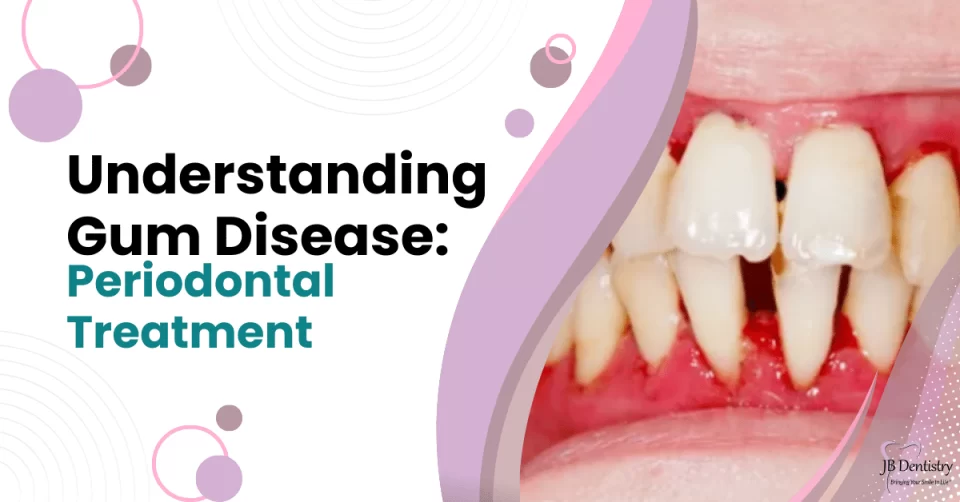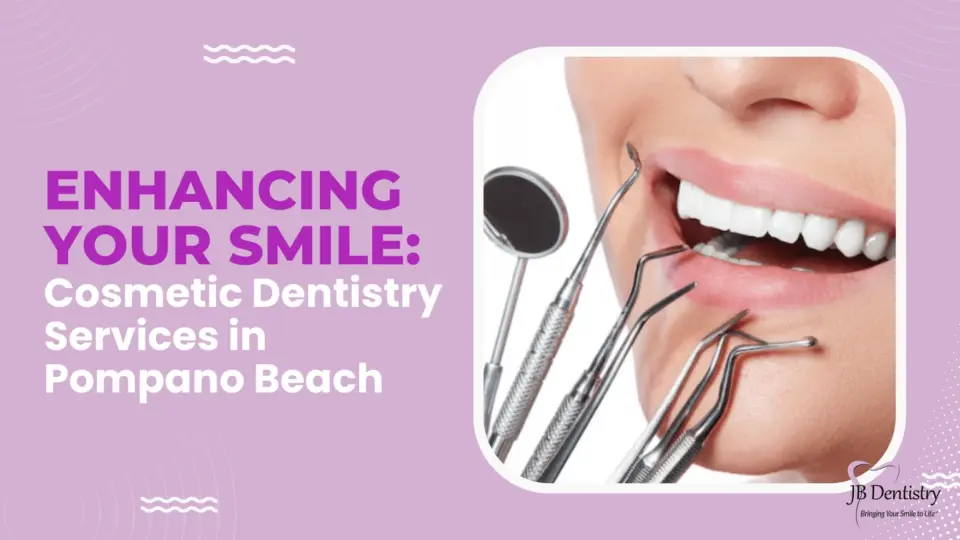
Understanding gum disease is essential for maintaining good oral health. Periodontal treatment is crucial in managing and combating this common dental condition. Plaque causes gum disease, commonly known as periodontal disease, a sticky film of bacteria, on teeth and gums.
Untreated, it can develop through phases from gingivitis, involving redness and swelling of the gums, to more severe forms like periodontitis, which can lead to tooth loss and other health complications.
Early gum disease detection and treatment require regular dental checkups. Good dental hygiene—brushing, flossing, and a balanced diet, are vital in prevention and management. Understanding gum disease and seeking appropriate periodontal treatment needed for a healthy grin and overall well-being.
What is the importance of understanding gum disease and its connection to periodontal treatment?
Understanding gum disease and its connection to periodontal treatment is paramount for best oral health. The gum disease, or periodontal disease, is a prevalent gum disease and tooth support issues. It starts with plaque buildup bacterial biofilm, on tooth surfaces, which, if not properly managed, can cause dental health problems.
The significance of comprehending gum disease lies in its potential consequences. Without treatment, gum disease might worsen from gingivitis, gum redness and inflammation, to advanced periodontitis, resulting in tooth mobility and loss. Moreover, research has established a clear connection between gum disease and systemic health, linking it to heart disease, diabetes, and respiratory problems.
Periodontal treatment plays a pivotal role in mitigating the impact of gum disease. It encompasses a range of interventions, from professional cleanings and scaling to more advanced procedures like gum surgery. Prevention of gum disease requires early detection and treatment of associated complications.
Ultimately, understanding gum disease empowers individuals to recognize its signs and risk factors, prompting them to seek periodontal treatment and maintain good oral hygiene practices. This knowledge is instrumental in preserving both oral and total health.
How do dental professionals diagnose and assess the severity of gum disease in patients?
Dental professionals use a combination of methods to diagnose and assess the severity of gum disease in patients. These assessments are crucial for determining the appropriate treatment plan. Here’s an overview of the diagnostic and assessment process:
- Visual Examination: The dentist or dental hygienist visually inspects the patient’s gums, looking for signs of inflammation, redness, bleeding, or other abnormalities. They also check for gum recession, which can indicate advanced gum disease.
- Probe Measurements: Dental professionals utilize a tiny periodontal probe to evaluate space depth or pockets between the gums and teeth. Deeper pockets can indicate more advanced stages of gum disease.
- Dental X-raysX-rays are taken to assess the bone structure beneath the gums. This helps determine if there is any bone loss, a common consequence of severe gum disease.
- Bite Assessment: How the patient’s teeth come together (their bite) may be assessed to check for signs of gum disease-related tooth mobility or misalignment.
- Medical and Dental History: Dental professionals inquire about the patient’s medical and dental history, including any risk factors such as smoking, family history of gum disease, or chronic illnesses like diabetes.
- Gum Disease Classification: Gum disease is typically classified into stages, including gingivitis (early stage) and various periodontitis (advanced stages) levels. The severity is determined based on the extent of tissue damage and bone loss.
- Risk Assessment: Assessing risk factors, such as tobacco use, poor oral hygiene habits, and certain medical conditions, helps identify individuals at higher risk for gum disease.
The diagnosis and severity assessment is complete, and a treatment plan can be formulated tailored to the patient’s specific needs and the gum disease stage. This plan may include professional cleanings, scaling and root planing, gum surgery, or other interventions.
Regular follow-ups are necessary to track development and assure the effectiveness of treatment. Early detection and intervention are key to managing gum disease and preserving oral health.
Can untreated gum disease lead to more serious oral health problems, and how does periodontal treatment prevent this?
Untreated gum disease might worsen oral health problems and potentially have broader health implications. Gum disease begins as gingivitis, characterized by inflammation and bleeding of the gums. Untreated, it can cause gum disease condition called periodontitis have significant consequences:
- Tooth Loss: Advanced gum disease can cause tooth mobility and eventual tooth loss as the supporting structures of the teeth, including bone, deteriorate.
- Abscess Formation: Untreated periodontitis can lead to abscesses and painful pus pockets that can develop in the gums or tooth roots.
- Oral Infections: Gum disease can promote mouth infections, which can spread to other regions of the body mouth or even enter the bloodstream, potentially affecting other organs.
- Systemic Health Risks: Emerging research suggests a link between gum disease and systemic health problems, including heart disease, diabetes, respiratory issues, and complications during pregnancy.
Periodontal treatment is critical in preventing these adverse outcomes. It aims to control the progression of gum disease, halt tissue and bone loss, and restore oral health.
Through professional cleanings, scaling, root planing, and sometimes surgical interventions, periodontal therapy removes the source of infection, promotes tissue healing, and reduces the risk of further complications.
Regular maintenance and good oral hygiene practices are essential for sustaining the benefits of periodontal treatment, ensuring long-term oral health, and potentially reducing the risk of associated systemic health issues.
Are there different types of periodontal treatment options available for addressing gum disease?
Yes, several types of periodontal treatment options are available to address gum disease. The treatment choice depends on the gum disease’s severity and individual patient needs. Here are some common periodontal treatment options:
- Dental Cleanings (Prophylaxis)
- Scaling and Root Planing
- Gum Surgery
- Flap Surgery
- Bone Grafting
- Soft Tissue Grafting
- Laser Therapy
- Antibiotics
- Ongoing Maintenance
The severity of the condition determines the specific treatment plan, the patient’s overall health, and their individual needs. Dental professionals assess the extent of gum disease and recommend the most appropriate course of action to halt its progression, restore oral health, and prevent further complications. Early intervention and a commitment to ongoing oral hygiene are essential for successful periodontal treatment.
How do regular dental check-ups play a role in the early detection and management of gum disease through periodontal treatment?
Regular dental check-ups play a pivotal role early gum disease detection and treatment through periodontal treatment in several ways:
- Early Detection: During routine dental examinations, dental professionals visually assess the condition of the gums and use periodontal probes to measure pocket depths. This allows them to identify the signs of gum disease, even in its earliest stages. Early detection is critical because gingivitis, the initial phase of gum disease, is usually asymptomatic and can progress unnoticed.
- Assessment of Severity: Dental check-ups help determine the severity of gum disease. By evaluating factors such as pocket depth, gum recession, bleeding, and X-rays to assess bone loss, dentists can classify the stage of gum disease from mild gingivitis to more advanced periodontitis.
- Personalized Treatment Plans: Dental professionals can create customized patient-specific treatment strategies based on the assessment. Mild cases may require professional cleanings and better dental hygiene, but severe instances may require scaling and root planing or surgical interventions.
- Timely Intervention: Regular check-ups enable early intervention. In early gum disease detection, treatment is often less invasive and more effective, preventing further progression and complications.
- Preventive Education: Dental professionals use check-ups to teach patients about brushing, flossing, and regular dental appointments. Preventive education empowers patients to maintain good oral health and prevent gum disease.
- Monitoring Progress: For patients undergoing periodontal treatment, regular check-ups allow dental professionals to monitor treatment progress, assess the response to interventions, and make necessary adjustments to the treatment plan.
- Preventive Measures: Dental check-ups also offer opportunities for preventative measures. Fluoride treatments, sealants, and other preventive measures can help protect the teeth and gums from future gum disease development.
Regular dental exams are essential proactive oral health care. They facilitate early detection, prompt treatment, and ongoing gum disease management, helping preserve oral health, prevent complications, and improve overall well-being. Dental professionals partner in patients’ oral health journeys, emphasizing the importance of preventive care and timely intervention.
Taking Control of Your Oral Health with Periodontal Treatment
Take control of your oral health and smile confidently with periodontal treatment at Jaline Boccuzzi Dentistry. Our skilled dentists strive to provide comprehensive care, from early detection to tailored treatment plans. We prioritize your well-being, offering effective solutions to help treat gum disease and improve oral health.
With regular check-ups and personalized periodontal treatment, you can safeguard your smile and enjoy lasting dental wellness. Schedule your appointment with us today and take the first step towards a healthier, happier mouth.

